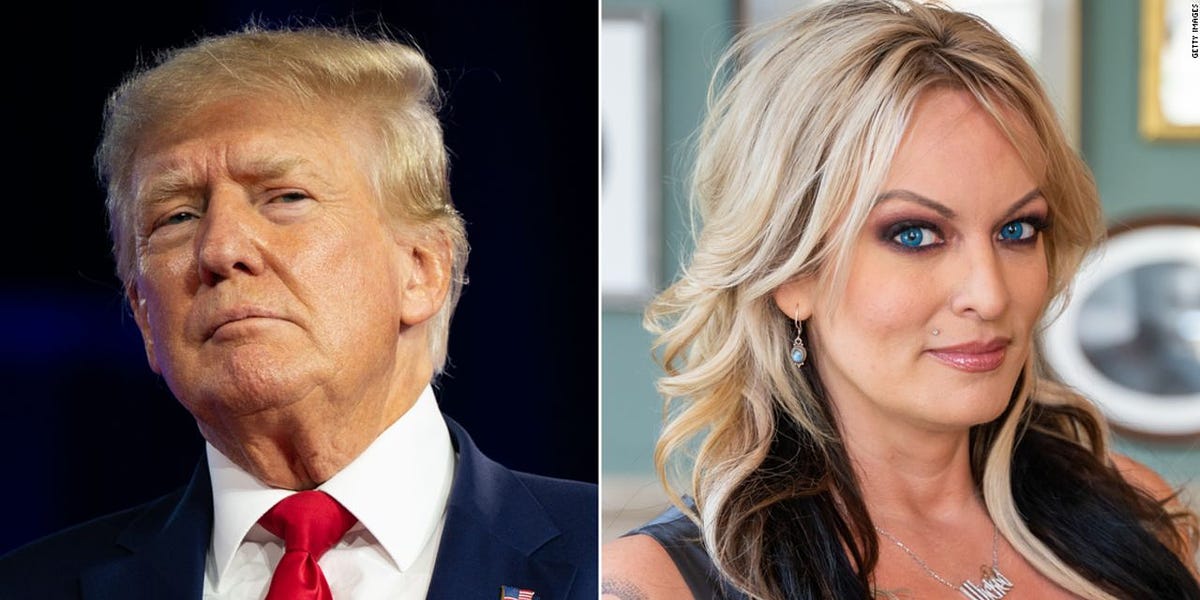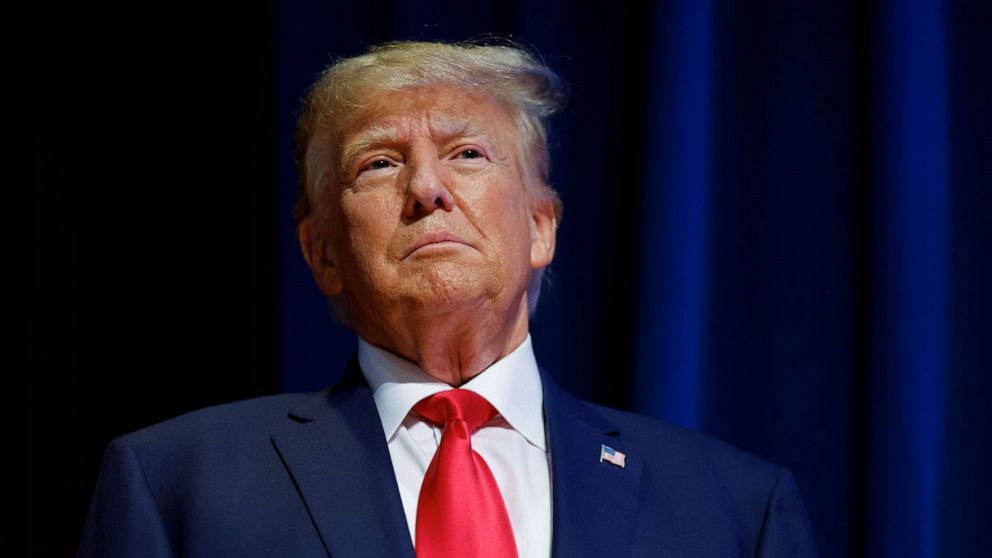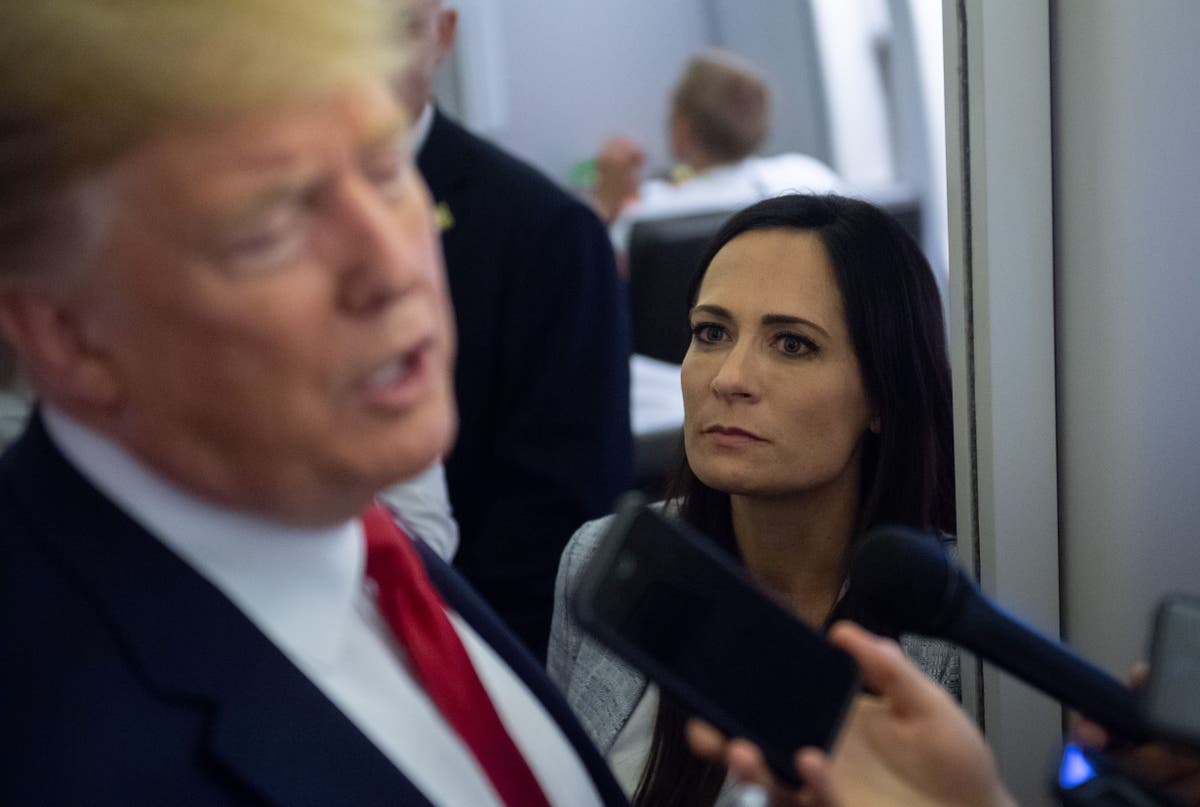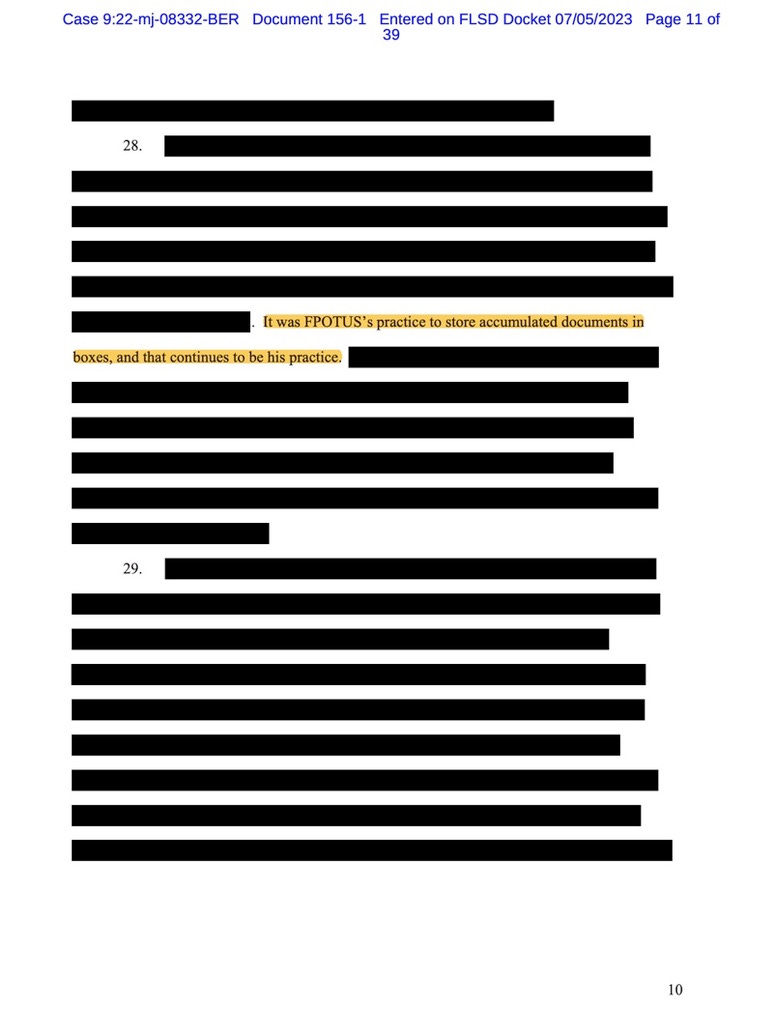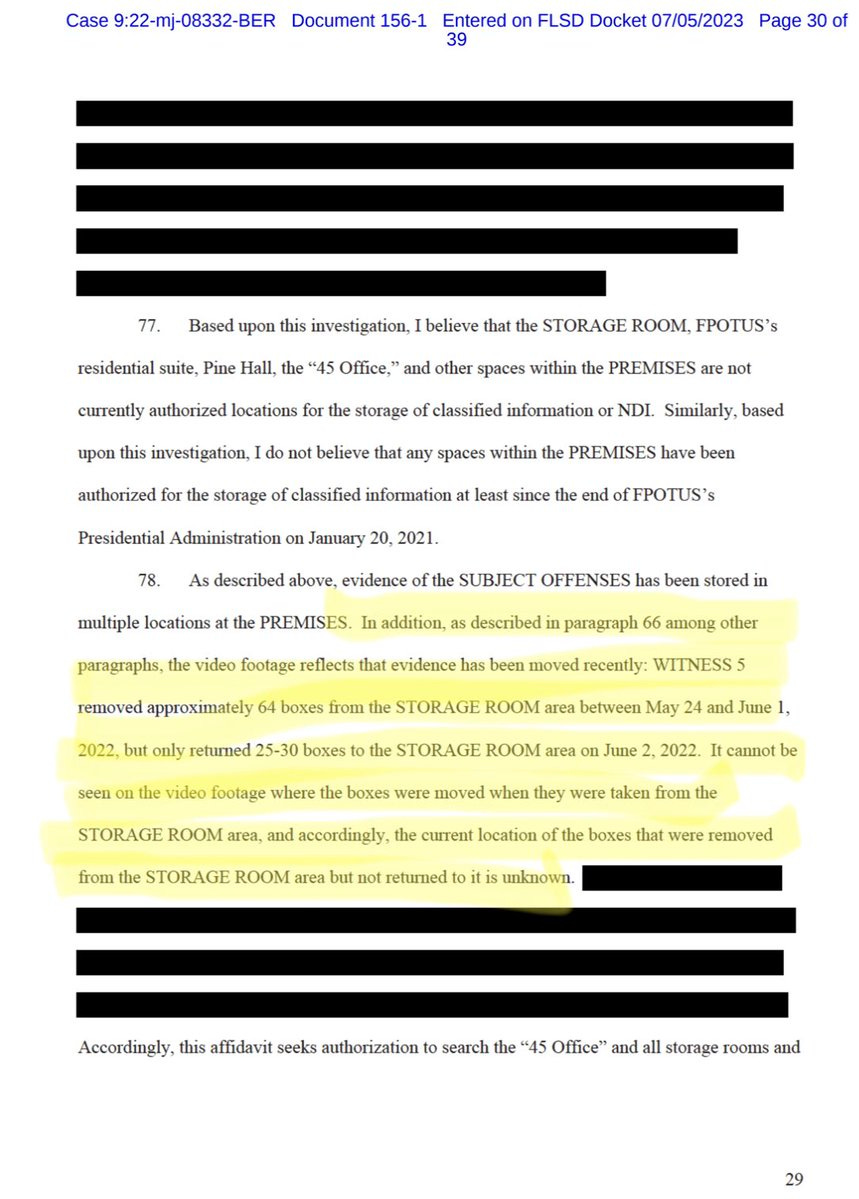Part 2
"[T]he current location of the boxes that were removed from the STORAGE ROOM area but not returned to is unknown," prosecutors
told the court.
Why did the FBI, as reported, hesitate and even push back against getting a search warrant here? Had this been any other case with evidence of this nature not only meriting a search but mandating that one be done to protect national security, it’s difficult to envision that they would not have been the leading force.
Despite what the government knew about the missing boxes, Trump’s lawyer Evan Corcoran told DOJ "he was advised" all White House records were in the storage room, and "he was not advised" any records were in any of the private spaces where they were ultimately found when DOJ conducted its search. The use of the passive voice here is notable. It theoretically possible someone like Nauta conveyed this information to Corcoran, but in a matter like this, it’s highly unlikely that the lawyer would take the word of anyone other than his client, Donald Trump. Prosecutors most certainly asked Corcoran who told him this when he testified in front of the grand jury in March under a court order.
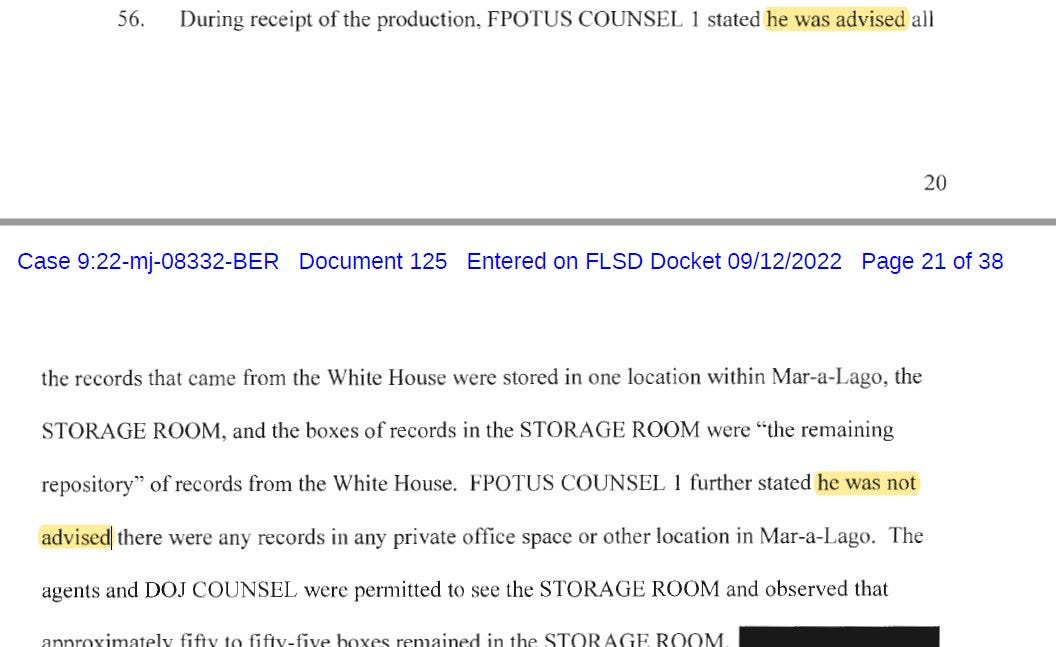
This is why Judge Beryl Howell, in the District of Columbia, permitted prosecutors to pierce the attorney–client privilege with the crime fraud exception. While it’s possible that Corcoran was under notice from other sources that Trump had lied to him, the logical conclusion here seems to be that Trump was using the lawyers and the legal advice they gave him about how the subpoena process would work to conceal his crimes. One of the mysteries of the case is why any lawyer would remain in Trump’s employment, knowing that his client couldn’t be trusted to tell him the truth.
Some of the newly unredacted info confirms that the FBI and DOJ knew that “classified information was possessed in other areas of” Mar-a-Lago. It’s one thing to know boxes are missing. But this goes a step further, confirming that before the search warrant was obtained, the government knew there was classified information elsewhere at Mar-a-Lago. But how did they know it? It seems likely that there were cooperating witnesses involved. Again, the black bars prevent us from knowing the “sources and methods” of the government’s information. But it seems clear there are additional witnesses involved, perhaps employees of the club or perhaps people who had been in Trump’s offices or other parts of the residence.
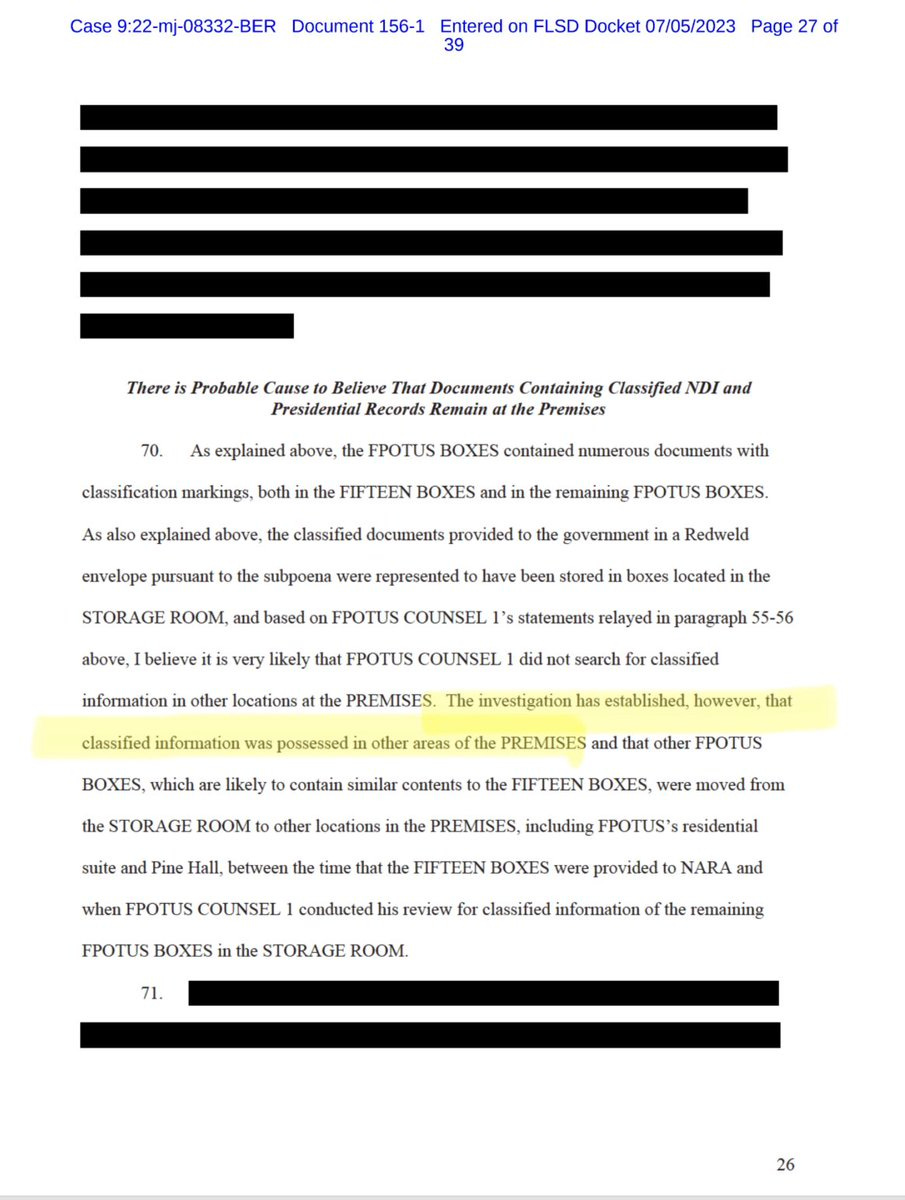
A sentence that was previously redacted at the end of paragraph 58 of the affidavit provided some interesting information. “Multiple documents also contained what appears to be FPOTUS’s handwritten notes.” This means Trump won’t be able to claim he never saw the documents—at best he could maintain the notes were written while he was in office. But if he resorts to that argument, he still has to explain how the documents ended up at Mar-a-Lago after they were in his hands.

All in all, it’s not a lot of new information, but we’re seeing the depth in the government’s case and learning more about its strength. Perhaps most importantly, the release of these interesting pieces of information underscores just how much more there is that we don’t know. With the former president’s team beginning to get access to discovery, he’s in the process of learning just how strong it is. That may explain why we see him acting out even more than usual on social media.
On June 29, just hours after Trump posted President Obama’s Washington, D.C. address on Truth Social, one of Trump’s followers,
Taylor Taranto, predictably picked up the gauntlet. He was arrested by the Secret Service in the neighborhood after livestreaming that he was looking for a way in. Taranto also faces misdemeanor charges in connection with January 6. His defense lawyers suggested during his detention hearing on those charges that prosecutors intend to bring felony charges in connection with the incident involving Obama. Taranto had two 9mm weapons, hundreds of rounds of ammunition, and a machete in his vehicle at the time of his arrest. An additional 18 firearms registered to Taranto were unaccounted for, and after he was arrested, information on his social media accounts was deleted, suggesting a possible accomplice.
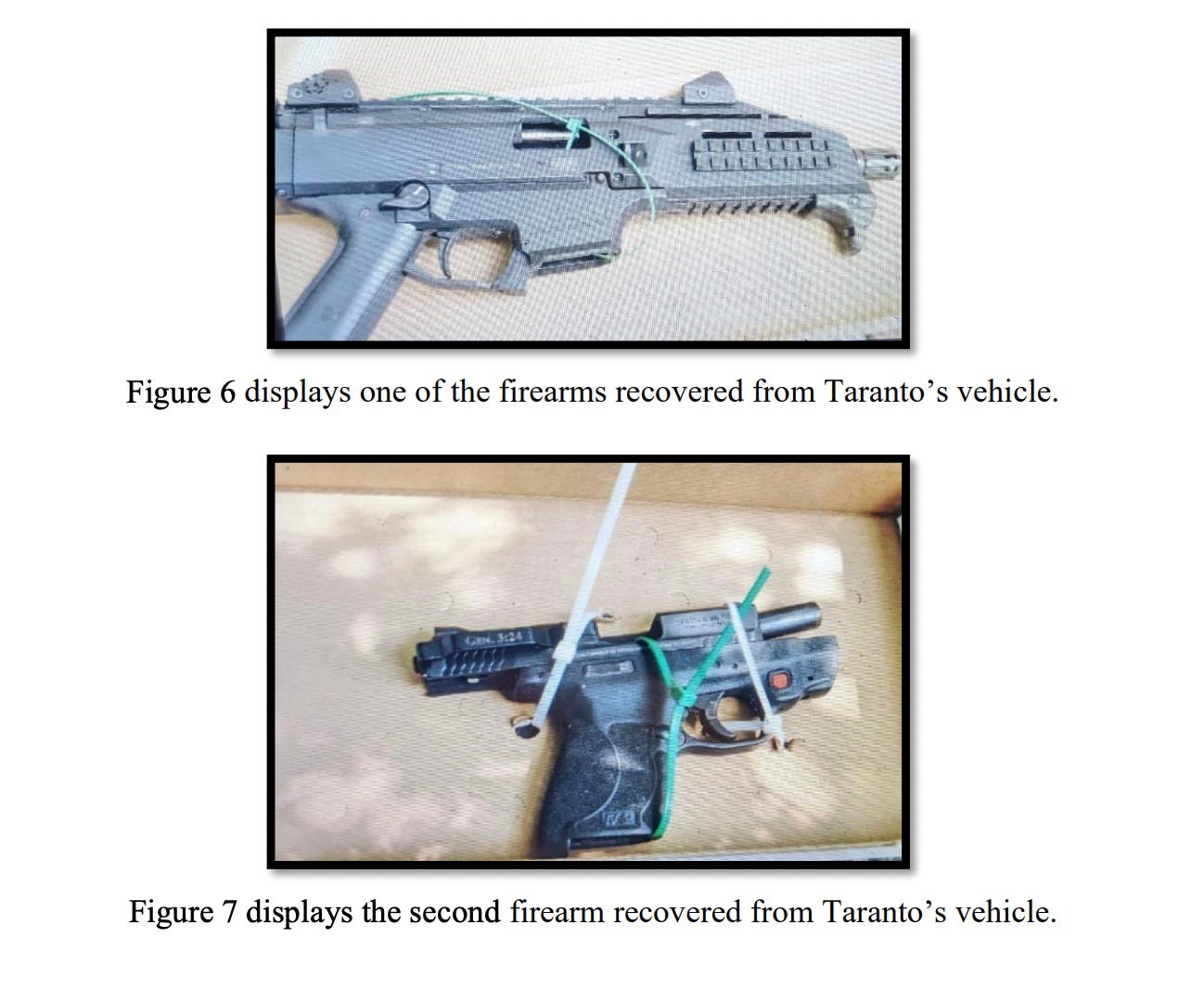
Trump knows that when he speaks, his followers listen. That’s how the country ended up on the verge of chaos on January 6. Did he think some sort of payback was due to Obama as he learned more about the government’s case against him? Or was it a childish but highly dangerous temper tantrum? Trump’s followers
are now harassing and threatening agents and prosecutors working on cases against him. The risk of someone being seriously harmed to salve the former president’s mounting insecurities is untenable. Trump’s behavior is unacceptable. And yet delay is already creeping into the Mar-a-Lago prosecution. Walt Nauta was only just arraigned Thursday, three weeks after Trump, on the thin veneer of an excuse that he couldn’t find a Florida lawyer to represent him.
Trump is increasingly a danger to the community, and courts and prosecutors would do well to treat him like one. He’s cornered. And there’s no telling what he won’t stoop to to try and save himself, or just to vent his anger.
On Wednesday, Federal Magistrate Judge Bruce Reinhart denied a request from several news organizations to release the entire affidavit DOJ submitted in support of its request to search Mar-a-Lago last August. But the judge did order DOJ to release a slightly less redacted version.

joycevance.substack.com
